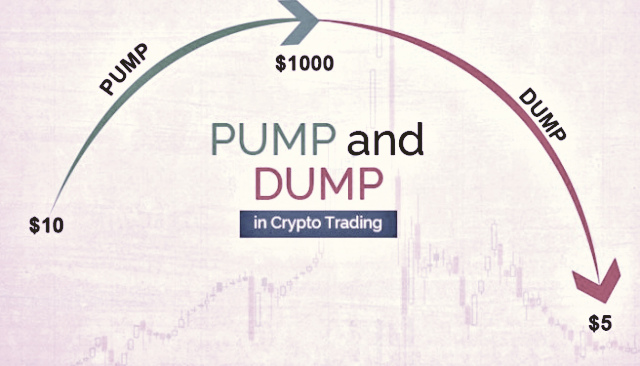The cryptocurrency market often attracts traders with its volatility. A 50 % price change in a day no longer surprises anyone. Price increases of even 100–300 % are becoming commonplace.
If an inexperienced investor rushes to buy a rapidly appreciating coin, hoping to make a huge profit, they may end up losing everything. Most likely, the price will plummet within a day. This is most likely due to pump and dump, a well-known trick used by professionals to take advantage of newcomers.
Table of Contents
The principle of this scheme
Step one is pump, that is, price inflation. To do this, one or more large traders—known as ‘whales’—start buying up large quantities of a particular coin, causing its price to rise. When the price increases by 10–15%, other traders immediately notice this growth and also start buying up this coin. This causes the price to jump even higher, which attracts more people eager to get rich.
Step two is dump, that is, selling coins when their price has already reached the target maximum. Because whales dump their reserves of hyped coins onto the market, there is an oversupply, which immediately causes the price to plummet. The other holders involved in this game start to panic and also sell these coins in an attempt to limit their losses. But they are already in the red, while the whales, having made a super profit, are already eyeing a new coin for the next pump.
This scheme was invented long before cryptocurrencies and was used by stock traders during the wild stock market era. Now it has become relevant again, only this time in the new age of cryptocurrency trading. Here are the reasons why it is so effective:
- Fear of missing out (FOMO) syndrome. This is when market participants are afraid of missing out on new opportunities to make the kind of profits that BTC, ETH and other popular coins brought in their days. Because of this syndrome, emotional traders, watching the coin’s price rise sharply, try to catch luck by the tail.
- Informational influence. This is when information about a promising coin spreads across social media, forums, and chat rooms. Sometimes it is presented as secret information from private sources. Trusting closed channels or pseudo gurus of trading, newbies rush to buy the advertised coin and fall into a trap.
How to spot a pump & dump
If developers launch a working version or update their software, add new products and services to their project, the appearance of their coin on a major exchange can naturally raise the price by tens of percent. Ignoring such an event can mean missing out on the chance to make a large profit. Therefore, it is important to be able to distinguish such natural growth from a pump.
That’s why one needs to closely follow the project development and the news that the developers post on their websites and in the official forum threads. If the coin rises in price due to the positive news coming through the major thematic media, then this indicates its importance for the crypto community. That’s the promising altcoin worth investing in. But if the coin rapidly rises in price without any news, most likely, it has become a tool for a pump.
Also, manifold increase in trading volume can be a significant indication of a pump. Whales prefer low volume coins with small capitalization as they are easier to pump and their trading volume increases tenfold.
Should you join a pump & dump group?
Any growth allows you to earn money. A pump also provides such an opportunity, because that is why it is initiated. However, you need to be aware that the organisers of the pump will try to make money off you.
Before getting involved in this game, you need to calculate how long the pump will last and how high the coin price will rise. Small altcoins pump by about 50–100 %, while large coins with huge capitalisation can jump by 20–40 %. If the growth exceeds these values by half, then the risk of losing your investment by being amongst those who entered at the peak is higher than the chances of making a profit.
You should also be cautious about offers to join pump channels, where participants agree on when and which coin to pump. In most cases, the organisers of these channels first buy up small batches of the selected coin themselves and only then involve others. As a result, you will be pumping up the price for others, while they will already be dumping their assets. In the end, you will find yourself in the red.
So, pump and dump is a risky and dubious activity. And considering that many countries have begun to tighten regulations and reduce opportunities for anonymous trading, the risk increases even more. Therefore, it is better to avoid this scheme, because there are plenty of honest ways to make a good profit in the cryptocurrency market.


